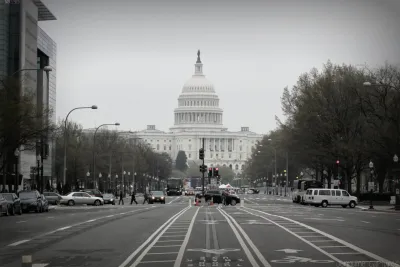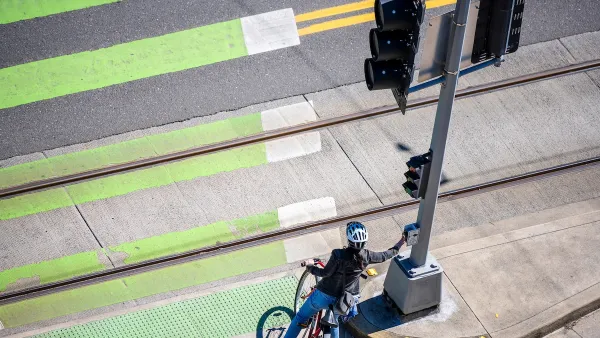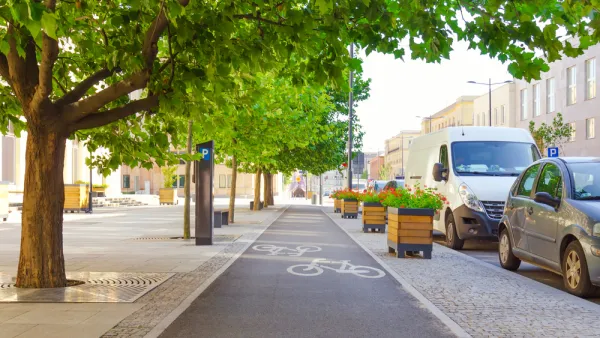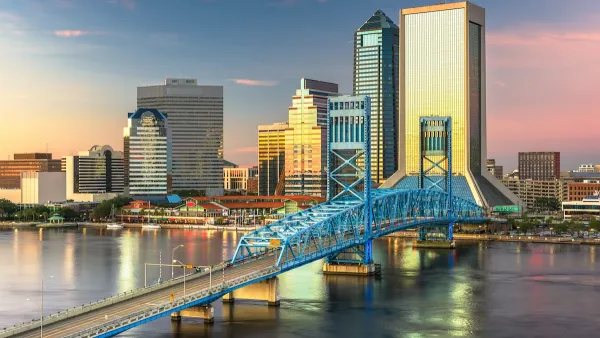Washington, D.C., is not meeting its Vision Zero goals. Three proposed bills would put requirements in place to make traffic safety a priority.

A bill introduced last week would bolster Vision Zero efforts in Washington, D.C., reports Caitlin Rogger. It focuses on better infrastructure, stronger enforcement of existing laws, and planning to reduce auto travel. Two additional proposed bills would improve traffic safety by requiring curb extensions to protect pedestrians and mandating that the district’s written driving test include questions about biking-related laws.
The Vision Zero bill also requires that the District Department of Transportation update the transportation plan every two years and work to improve street safety and shift commuters from driving to transit, biking, and walking. "The provision to plan for 50% of commutes by public transit and 25% by riding bicycles or walking by 2032 are particularly encouraging, as they reflect the kind of paradigm shift needed to meet equity, sustainability, and safety goals on a broader scale," notes Rogger.
Washington, D.C., is behind in reaching its Vision Zero goals. The plan was introduced in 2014, but the number of fatalities last year was the highest in a decade. "Advocates have been saying for years that DC’s leadership would have to make eliminating traffic-related deaths a much higher priority to make any progress," writes Rogger.
FULL STORY: Three new bills aim to make DC streets safer

National Parks Layoffs Will Cause Communities to Lose Billions
Thousands of essential park workers were laid off this week, just before the busy spring break season.

Retro-silient?: America’s First “Eco-burb,” The Woodlands Turns 50
A master-planned community north of Houston offers lessons on green infrastructure and resilient design, but falls short of its founder’s lofty affordability and walkability goals.

Delivering for America Plan Will Downgrade Mail Service in at Least 49.5 Percent of Zip Codes
Republican and Democrat lawmakers criticize the plan for its disproportionate negative impact on rural communities.

Test News Post 1
This is a summary

Test News Headline 46
Test for the image on the front page.

Balancing Bombs and Butterflies: How the National Guard Protects a Rare Species
The National Guard at Fort Indiantown Gap uses GIS technology and land management strategies to balance military training with conservation efforts, ensuring the survival of the rare eastern regal fritillary butterfly.
Urban Design for Planners 1: Software Tools
This six-course series explores essential urban design concepts using open source software and equips planners with the tools they need to participate fully in the urban design process.
Planning for Universal Design
Learn the tools for implementing Universal Design in planning regulations.
EMC Planning Group, Inc.
Planetizen
Planetizen
Mpact (formerly Rail~Volution)
Great Falls Development Authority, Inc.
HUDs Office of Policy Development and Research
NYU Wagner Graduate School of Public Service





























